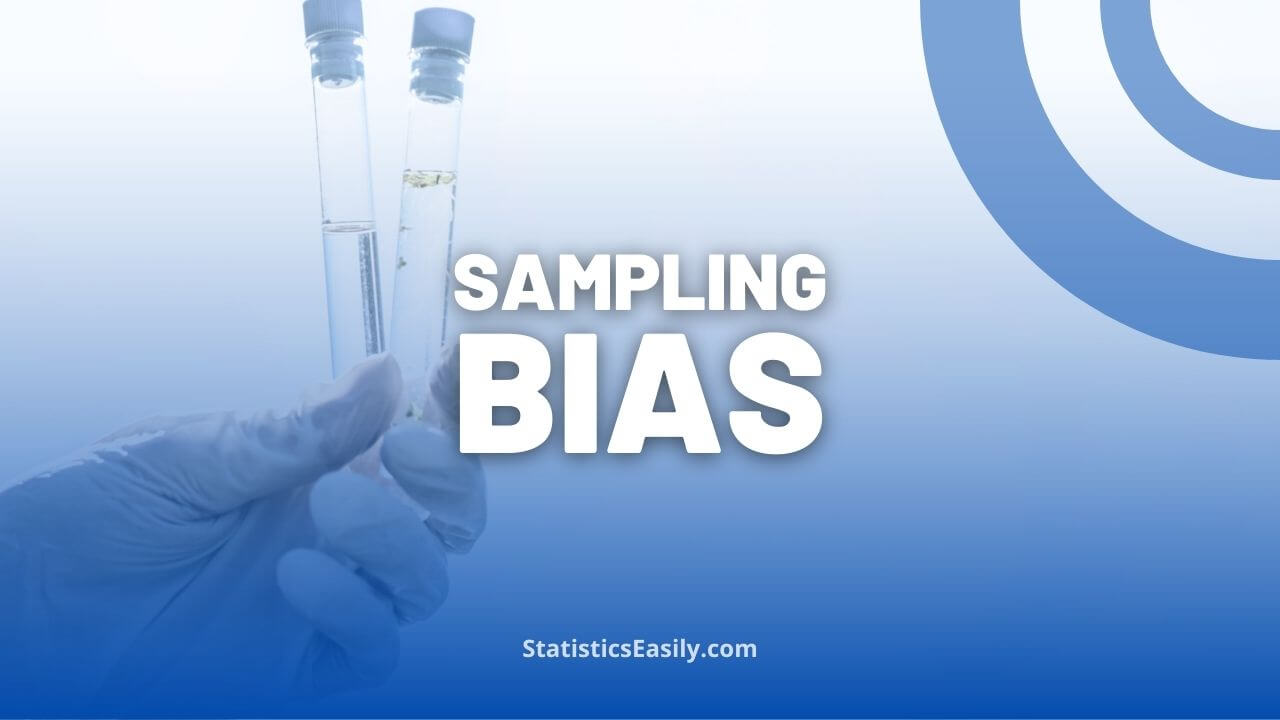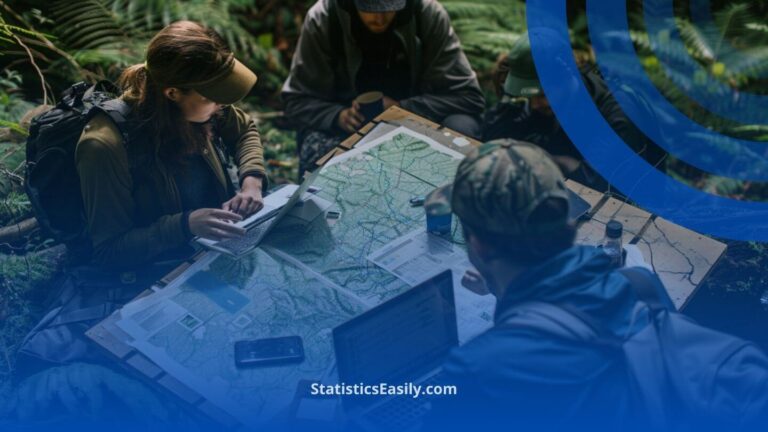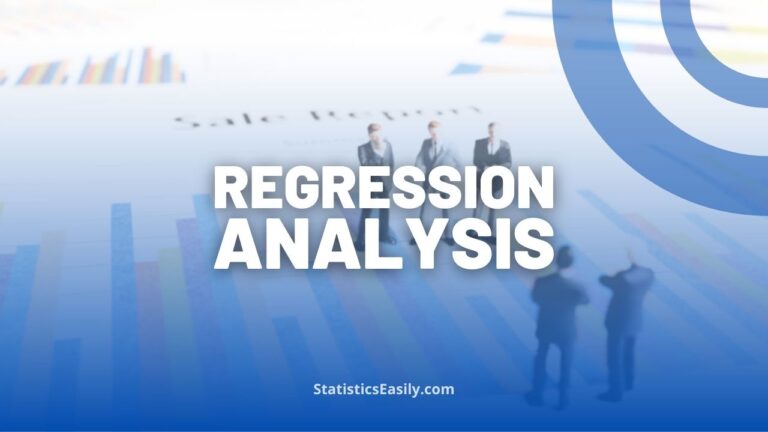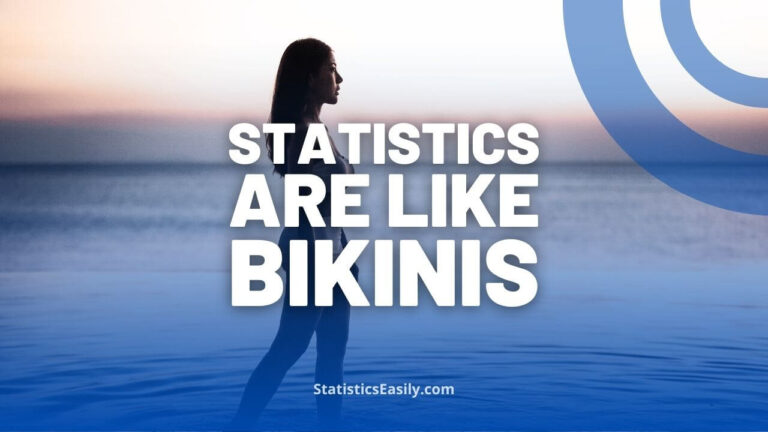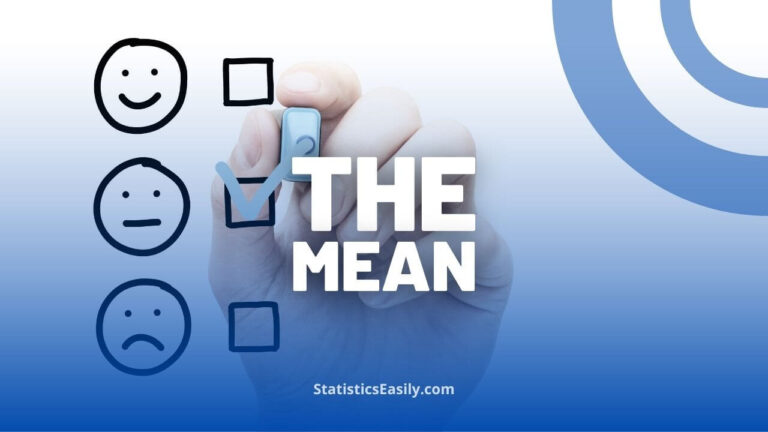Unraveling Sampling Bias: A Comprehensive Guide
When a sample is not taken in a way that represents the entire population, it can result in sampling bias. This means some members are more likely to be included in the sample than others. This discrepancy can distort the results of studies and experiments, leading to potentially erroneous conclusions.
Introduction to Sampling Bias
In statistics and data science, accuracy and precision are paramount. However, errors can easily creep into data collection and analysis, causing misleading results. One of these critical errors is known as “sampling bias.”
Sampling bias happens when certain population members are more likely to be systematically chosen in a sample than others. It distorts the results of studies and experiments, creating a gap between the characteristics of the sample and those of the overall population.
Sampling bias can lead to over- or underestimation of specific population parameters, thus skewing results and potentially leading to erroneous conclusions.
This article provides a guide to understanding and unraveling sampling bias, from its impact on statistical analysis to methods of prevention and correction.
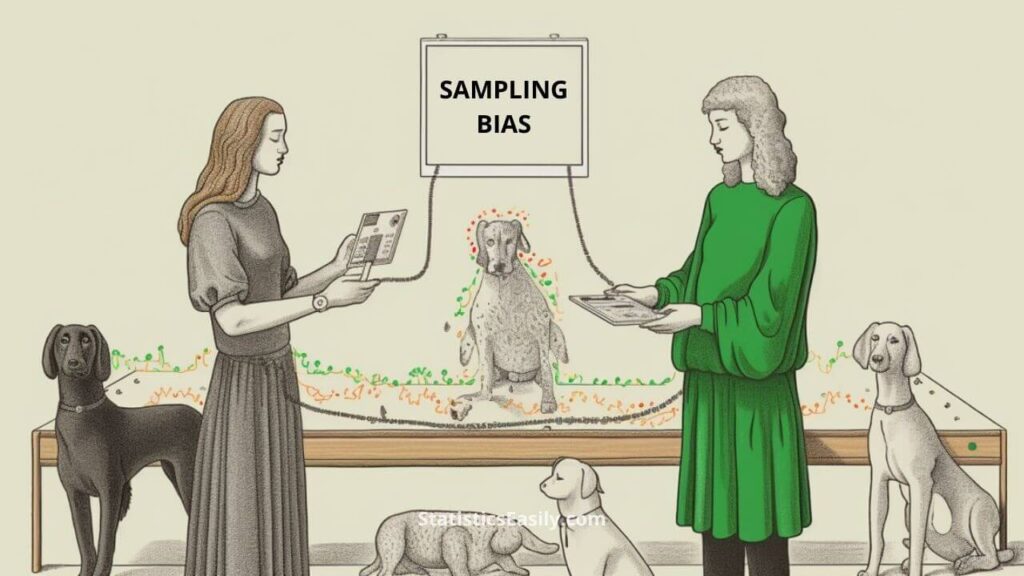
Highlights
- Sampling bias occurs when a sample does not represent the population, skewing the results of studies and experiments.
- Sampling bias can significantly affect statistical analysis, leading to potentially erroneous conclusions.
- In the era of big data, the awareness of sampling bias is more critical than ever.
- Random sampling, stratified sampling, and oversampling can help prevent and correct sampling bias.
- Machine learning algorithms trained on biased data can perpetuate and amplify inequalities.
Ad Title
Ad description. Lorem ipsum dolor sit amet, consectetur adipiscing elit.
The Impact of Sampling Bias on Statistical Analysis
The influence of sampling bias on statistical analysis is significant and multifaceted. At its core, sampling bias creates inaccuracies in data representation, which can mislead analysts and decision-makers.
For example, if a survey about workplace satisfaction only includes responses from full-time employees, it could significantly overestimate overall satisfaction levels by excluding part-time or temporary workers with different perspectives.
These inaccuracies can ripple through all levels of analysis, distorting key performance indicators and biasing predictive models. Consequently, decisions based on biased data can misallocate resources, ineffective policies, and missed opportunities.
Types of Sampling Bias
There are several types of sampling bias, each with its unique set of causes and effects. The most common types include:
Selection Bias: This occurs when the method of selecting subjects results in a sample not representative of the population. An example would be a telephone survey that only reaches those with landlines, excluding younger demographics primarily using mobile phones.
Non-Response Bias: This bias is introduced when the individuals who respond to a survey differ significantly from those who do not. For example, suppose a survey is sent by mail, and younger individuals are less likely to respond than older individuals. In that case, the survey may underrepresent younger viewpoints.
Convenience Bias: This occurs when samples are selected because they are easy to obtain. For example, a survey conducted on a university campus might only include students because they are readily available, but this could lead to results that do not represent the broader population.
Undercoverage Bias: This occurs when some population groups are inadequately represented in the sample. For instance, if a health study is conducted only in urban areas, it might underrepresent rural populations, leading to conclusions that may not apply to them.
Overcoverage Bias: This is the opposite of undercoverage bias, occurring when some groups are overrepresented in the sample. For example, individuals with high-speed internet access might be overrepresented in an online survey about internet usage because they can complete the survey more easily.
Volunteer Bias: This occurs when people who volunteer to participate in a study have different characteristics from those who do not. For example, people who volunteer for a health study might be more health-conscious than the general population, skewing the results.
Survivorship Bias: This type of bias occurs when analyses are conducted only on the surviving part of a population, excluding those who failed or dropped out. For instance, a study on the effectiveness of a particular medication might only include patients who completed the treatment, thus ignoring those who dropped out due to side effects.
Attrition Bias: This type of bias happens when participants drop out of a long-term study over time. Those who remain may systematically differ from those who leave, affecting the study’s results. For instance, in a study about the long-term benefits of a particular diet, people who stick to the diet might have different characteristics from those who quit.
Self-Selection Bias: This occurs when individuals select themselves into a group, causing a biased sample with outcomes that are not generalizable to the broader population. For instance, an online survey about a product might only attract those who feel strongly about the product, positively or negatively.
Healthy User Bias: This occurs in medical and health research when healthier individuals are more likely to be selected in the study, potentially skewing the results. For example, in a study about the effects of a particular exercise, individuals who are already physically active are more likely to participate.
Exclusion Bias: This bias happens when certain groups are excluded from the sample. For example, a study on human behavior that only includes college students might not represent the broader population.
Confirmation Bias: In sampling, this can occur when researchers subconsciously select data or participants that confirm their pre-existing beliefs or hypotheses, overlooking data that contradicts them.
Observer Bias: Detection bias happens when researchers’ expectations or knowledge affect their observation or interpretation of the outcomes. It’s often seen in clinical trials where knowing the treatment assignment might affect the assessment of the outcome.
Lead Time Bias: In survival analysis, early disease detection is confused with increased survival. For example, suppose a screening program detects a disease earlier. In that case, it might seem like the survival time has increased, even though the time of death hasn’t changed.
Length Time Bias: Similar to lead time bias, this happens when slower progressing, and therefore probably less lethal, disease cases are more likely to be identified in a screening process, skewing the sample towards more benign cases.
Real-World Examples of Sampling Bias
The effects of sampling bias can be seen in various real-world scenarios.
One notable example is the Literary Digest’s 1936 presidential election poll. Based on a survey of its readership, the magazine predicted a landslide victory for Alfred Landon over Franklin D. Roosevelt. However, their readers were predominantly wealthy. The poll vastly underestimated Roosevelt’s support among the general public, resulting in a notorious prediction failure.
Another example is survivorship bias in financial markets. Analysts often base their strategies on companies that have been successful in the past, ignoring those that have failed. This can lead to over-optimistic predictions and risky investment strategies.
Methods to Prevent and Correct Sampling Bias
Preventing and correcting sampling bias is crucial for statisticians and data scientists. The first step is to use a random sampling method whenever possible, as it gives every population member an equal chance of being selected. Stratified or cluster sampling can also ensure that different population subgroups are adequately represented.
Additionally, analysts should consider potential sources of bias during the design phase of a study and take steps to mitigate them. This might include using weighting techniques to adjust for non-response bias or conducting sensitivity analyses to assess the impact of potential bias on the results.
In cases where bias cannot be avoided entirely, it should be acknowledged, and its potential impact on the results should be clearly communicated. This transparency can help decision-makers interpret the results accurately and use them appropriately.
The Importance of Awareness of Sampling Bias in Data Science
In the big data and artificial intelligence era, the awareness of sampling bias in data science is more critical than ever. As data-driven decision-making becomes more prevalent in various sectors, the potential for biased data to lead to skewed results and unfair practices is increasingly high. For example, machine learning algorithms trained on biased data can perpetuate and amplify existing inequalities.
Moreover, new types of bias can emerge with the advent of complex data collection methods and large-scale datasets. For instance, social media data can suffer from ‘popularity bias,’ where viral posts are more likely to be selected for analysis, overlooking less popular but potentially insightful content.
Consequently, data scientists need to be vigilant about potential sources of bias, not only in the data they collect but also in the algorithms they design and use. Finally, they should seek to create robust, transparent, and fair models that reflect the diversity and complexity of the real world.
| Bias Type | Definition | Impact on Analysis | Preventive Measures |
|---|---|---|---|
| Selection Bias | When the method of selecting participants results in a non-representative sample | Skews results, making them unrepresentative of the entire population | Use random selection methods |
| Non-Response Bias | When those who respond to a survey significantly differ from those who do not | Can lead to underrepresentation of certain viewpoints | Increase response rates through follow-ups or incentives |
| Survivorship Bias | When analyses only include the surviving part of a population | Can lead to overestimation of success rates or product durability | Include both surviving and non-surviving elements in the analysis |
| Convenience Bias | When samples are selected due to their ease of access | Can lead to a lack of diversity in the sample | Use random sampling instead of convenience sampling |
| Undercoverage Bias | When some population groups are inadequately represented in the sample | Results are not generalizable to the entire population | Ensure all demographic groups are adequately represented |
| Overcoverage Bias | When some population groups are overrepresented in the sample | Can lead to overestimation of certain characteristics or behaviors | Ensure a balanced representation of all groups |
| Volunteer Bias | When volunteers for a study have different characteristics from those who do not volunteer | Can lead to skewed results, not representative of the entire population | Ensure recruitment strategies don’t favor certain types of participants |
| Healthy User Bias | When healthier individuals are more likely to be selected in a study | Can skew results, especially in health-related studies | Control for health-related variables in the study design |
| Attrition Bias | When participants drop out of a long-term study over time | Can lead to over- or underestimation of effects | Use strategies to maintain participant engagement over time |
Ad Title
Ad description. Lorem ipsum dolor sit amet, consectetur adipiscing elit.
Conclusion
Understanding and addressing sampling bias is fundamental to statistical and data science work. By being aware of its types, impacts, and methods of prevention and correction, we can strive toward more accurate, fair, and effective data analysis. As data science evolves, this commitment to tackling sampling bias will ensure that our data-driven insights and decisions reflect the world they aim to understand and improve.
Recommended Articles
If you enjoyed this comprehensive guide on sampling bias and its impact on statistical analysis, you’d love our next article, which dives deeper into data analysis. It provides practical, step-by-step instructions on conducting your data analysis, even if you’re a beginner. Develop a robust skill set that’s increasingly demanded in today’s data-driven world. Don’t miss it!
- Understanding Random Sampling: Essential Techniques in Data Analysis
- Understanding Sampling Error: A Foundation in Statistical Analysis
- Selection Bias in Data Analysis: Understanding the Intricacies
- Understanding Random Sampling (Story)
- Unraveling Sampling Bias (Story)
Frequently Asked Questions (FAQs)
Sampling bias happens when the chosen sample does not accurately represent the entire population, which could skew the study results.
Some common types of sampling bias include selection bias, non-response bias, survivorship bias, convenience bias, undercoverage bias, and overcoverage bias.
Sampling bias can skew the results of statistical analyses, leading to potentially incorrect conclusions and misinformed decisions.
Convenience bias occurs when samples are selected due to their easy accessibility, which can lead to unrepresentative results.
Undercoverage bias occurs when some population groups are underrepresented in the sample. In contrast, overcoverage bias happens when some groups are overrepresented.
Sampling bias can be prevented through random, stratified, and oversampling methods.
If machine learning algorithms are trained on biased data, they can perpetuate and amplify existing inequalities.
Volunteer bias occurs when people who volunteer to participate in a study have different characteristics from those who do not, potentially skewing the results.
In medical research, healthy user bias occurs when healthier individuals are more likely to be selected in a study, potentially distorting the results.
In long-term studies, attrition bias happens when participants drop out over time. Those who remain may systematically differ from those who left, affecting the study’s results.


